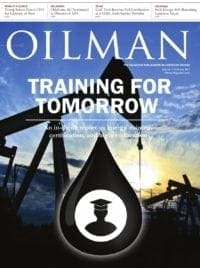Texas Railroad Commissioner Ryan Sitton in November 2016 joined a research consortium that is working to understand both naturally occurring and potentially induced seismicity in the state and the associated risks.
Sitton will collaborate with the Bureau of Economic Geology (BEG) Center for Integrated Seismicity Research (CISR), an industry-sponsored, multidisciplinary, trans-college research center. The research of CISR is designed to identify the subsurface processes that may influence seismicity, quantify and reduce risk to the citizens and infrastructure of Texas, and inform regulators and operators so that they can improve standards of practice to mitigate seismicity.
In a statement, Commissioner Sitton said: “I take the issue of induced seismicity very seriously. The science is clear that it is physically possible for injection wells that dispose of fluids deep underground to cause earthquakes in certain rare cases, given the right set of conditions. Unfortunately, this often is confused with hydraulic fracturing, which can cause micro earthquakes that are almost never felt.”
Sitton noted that, after careful study of operations in Texas, he determined that the Texas Railroad Commission should look “more closely at oil and gas injection activities in specific areas.”
He named Johnson County, Texas, as one area that has “elevated risks of seismicity related to disposal activities.”
“The governor’s technical advisory committee to the Texas Seismometer Network, BEG, CISR and other reliable scientific groups are working on smart scientific approaches to comprehensively evaluate seismicity and the associated risks in our state,” he said. “I am working with those groups, and if research points to a causal link between oil and gas and seismicity in the state, the Railroad Commission will address those situations in an appropriate way.”




